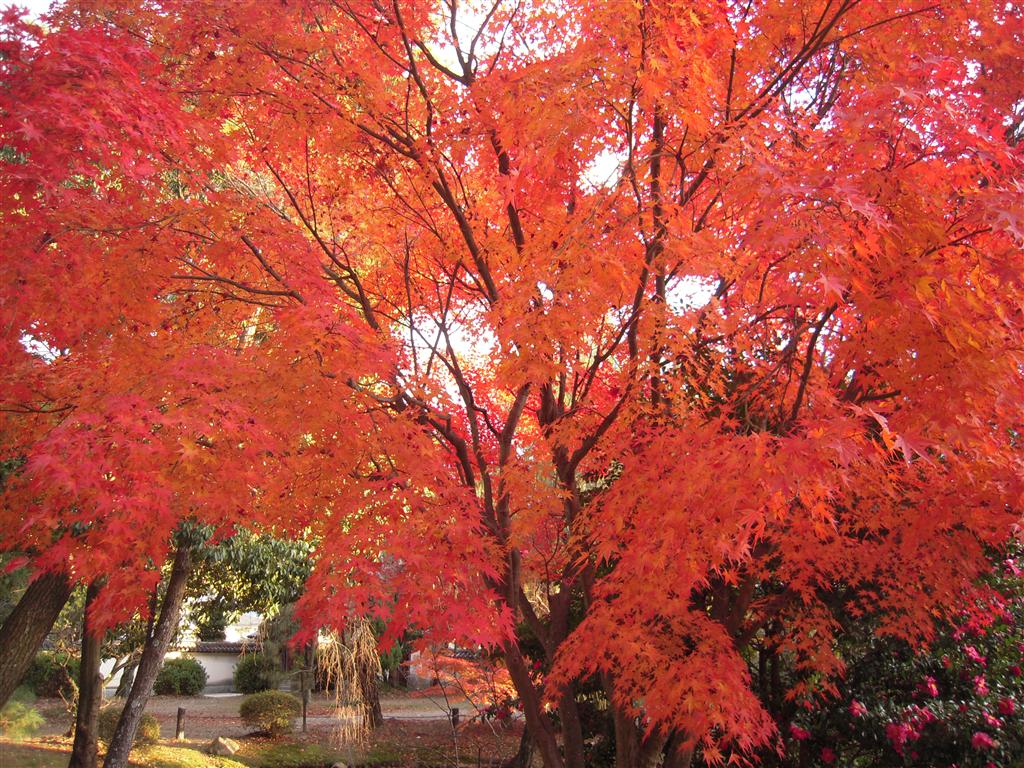
Autumn colours turn thoughts to verse
Green Shinto has posted items before on the connection of poetry and Shinto sentiments. Indeed, it’s said the very origins of the poetic impulse in Japan lie with religious utterances by miko, and in Kojiki (712) kami such as Susanoo are claimed as the country’s earliest poets (see postings in the category for Poetry to the right).
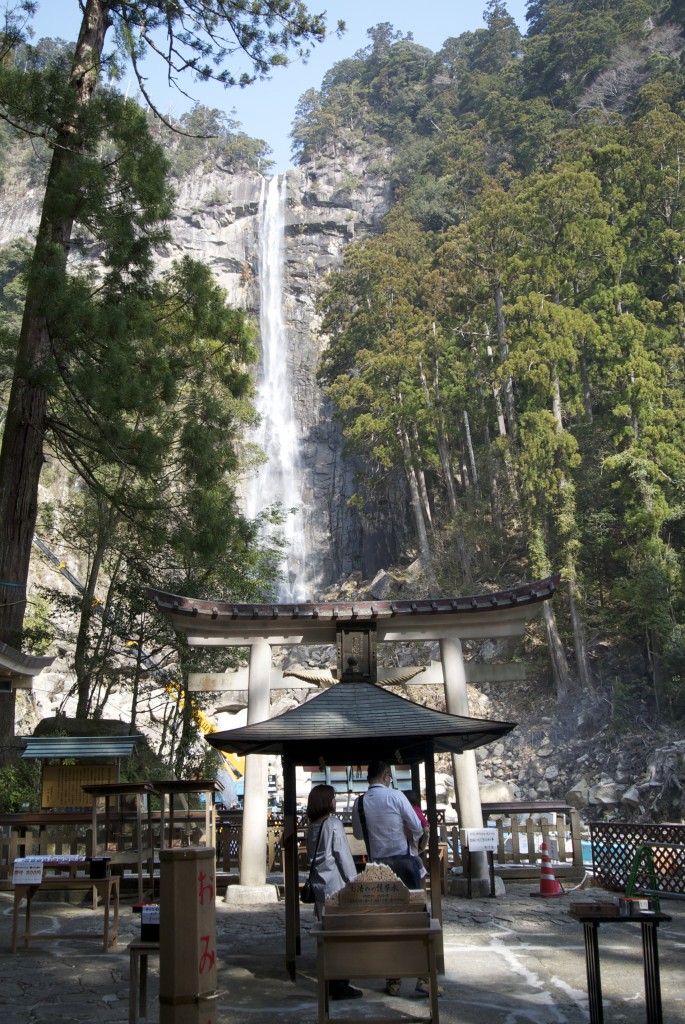
Some places compel a sense of awe – and poetry
Sense of place has always been important to Shinto, as it has indeed to Japanese poetry. One only has to read the early verse in the eighth-century Manyoshu to see that. The notion was later transmitted into an even shorter verse form – haiku.
Arakide Moritake (1473–1549) was from a family of Shinto priests who served at Ise Shrine. He was a poet of renga (linked verse) and is said by some to be the founder of haiku though no one knows for certain when the first 5-7-5 verse was written. The form emerged in feudal times out of the initial stanza of renga, and early haiku tended to be light-hearted or witty in their approach, as evident in this one by Arakide:
a cherry petal
flies back up to its branch—
oh, a butterfly!
It was not until Matsuo Basho (1644–1694) that the haiku came to express serious themes. Basho moved the haiku beyond simple word play and surprises. Here for example is his reflection on a famous battle field that evokes the themes of transience and vanity:
summer grasses—
all that remain of
warriors’ dreams
Basho’s association with Zen steered commentators like R.W. Blythe into promoting the notion that haiku was an essentially Zen form. But many of its best proponents like Issa for instance had nothing to do with Zen. It was born rather out of the Buddhist-Shinto sensibility that was (and still is) the religious mainstream of Japan.
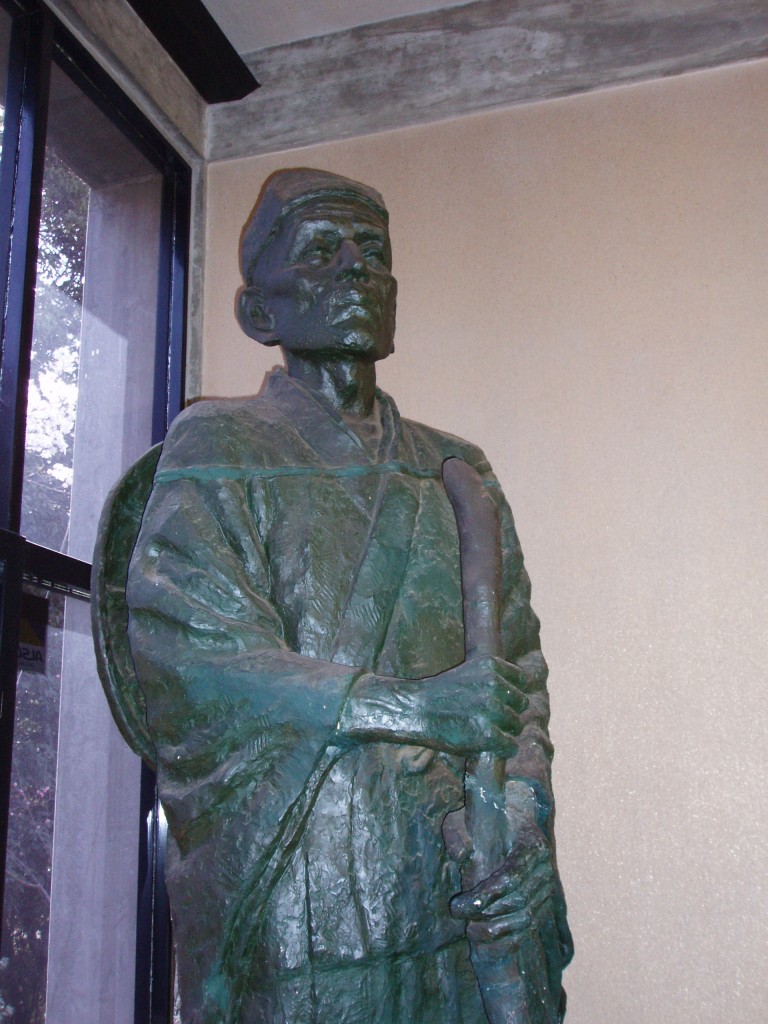
Wandering poet, Matsuo Basho
The website for the haiku foundation has a very interesting discussion on the links with Shinto, from which the piece below is taken, written by moderator David Grayson. If you would like to read more, there are plenty of other comments and examples on the webpage, and amongst the contributors Green Shinto friend Gabi Greve is particularly prominent. Please click here.
***********************************************
David Grayson writes: As a starting point, I want to highlight five Shinto assumptions and beliefs that are reflected in haiku.
1. Shintoism is local – A characteristic of Shintoism is that it is locally focused. Kami are rooted in specific locales, as are the shrines dedicated to them, and their constituents.
2. Physical vs. spiritual – Shintoism does not draw a hard distinction between the physical world we inhabit and the spiritual world. A nice illustration are Torii gates, which mark the entrance to shrines. The gates, which are actually arches, often have no gate or fence — marking the permeability between our world and the spirit world.
3. The natural world – Shintoism is grounded in the natural environment. Shrines are built in harmony with nature, usually built with natural materials and incorporating natural elements. Indeed, some “shrines” are natural landmarks like waterfalls and trees.
4. Seasonality – This is related to number three, but deserves to be called out. Festivals are tied to the seasons and to milestones in the farming calendar. [Gabi Greve has compiled a saijiki of kigo for festivals and ceremonies.]
5. Focus on the present – Shintoism is very much focused on the here and now.
……….
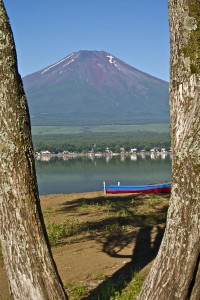
Mountain muse, Fuji-san
Shinto-inspired haiku abound; here are several that I’ve enjoyed:
on the trail of the gods …
all creatures and spirits
blessed by hoarfrost
– Nozomi Sugiyama, from Seasons of the Gods (2)
flicking off water
a dragonfly quickly
becomes divine
– Hoshinaga Fumio (3)
there is no voice
in this waterfall in November —
Fudo Waterfall
– Shimomura Hiroshi (4)
Having climbed Mt. Fuji,
My shadow stretches into
The form of a giant man
– Nobuyuki Yuasa, from Seasons of the Gods (5)
As mentioned above, Gabi Greve’s Saijiki for Festivals and Ceremonies is a good resource.
…………………..
Notes:
(1) BBC Religions: Shintoism – http://www.bbc.co.uk/religion/religions/shinto/beliefs/religion.shtml. 76% indicated that they followed Buddhism.
(2) Icebox – http://hailhaiku.wordpress.com/representative-haiku/
(3) Richard Gilbert, Poems of Consciousness (Winchester, VA: Red Moon Press, 2008), 167.
(4) “Religion and Nature” Topic in Religion, created by Gabi Greve. http://www.thehaikufoundation.org/forum_sm/index.php?topic=465.0
(5) Icebox – http://hailhaiku.wordpress.com/representative-haiku/
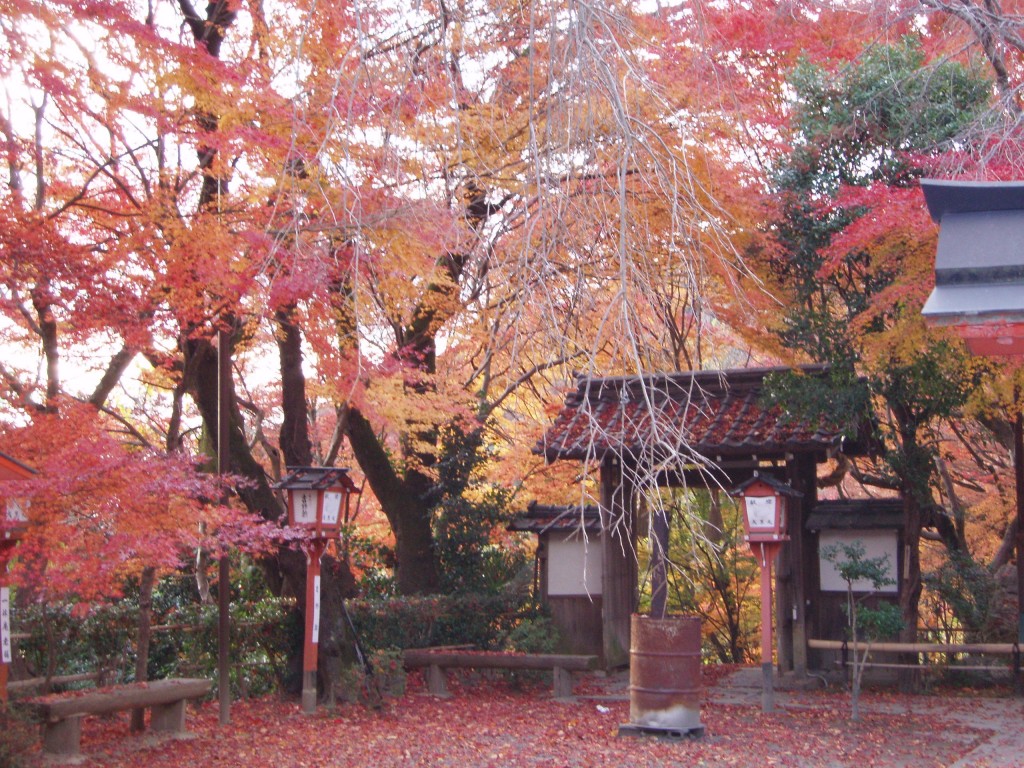
At its best haiku is a gateway into the realm of the sacred

Leave a Reply